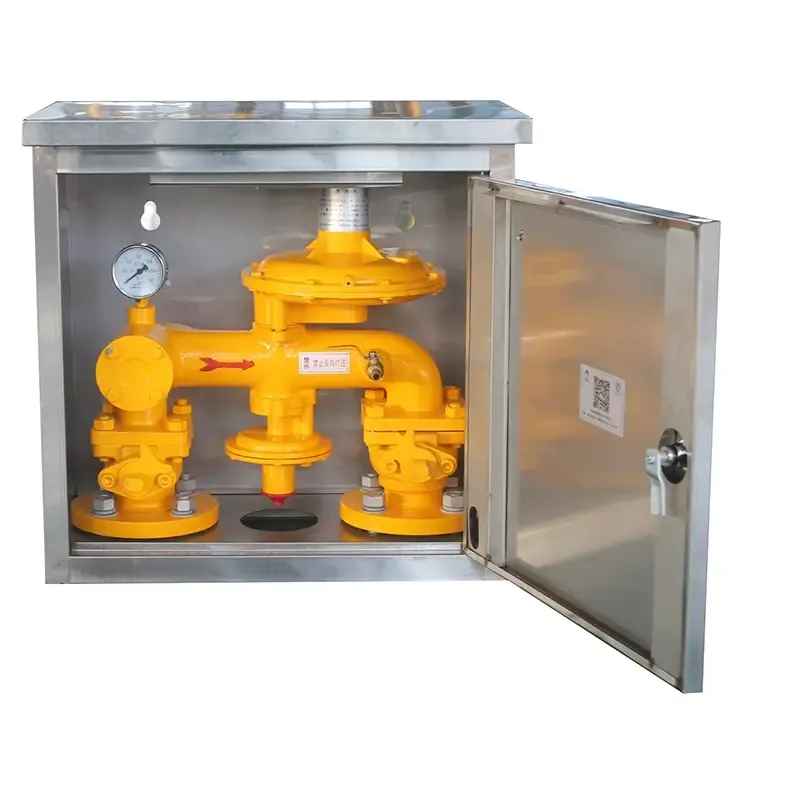
Dec . 04, 2024 20:39
Back to list
Understanding the Functionality and Importance of Shut-off Valves in Various Applications
Understanding Shut-Off Valves Essential Components in Fluid Control Systems
Shut-off valves are crucial components in various fluid control systems, playing a pivotal role in the management of liquid and gas flow. These valves are designed to either allow or prevent the passage of fluids, making them essential in a wide range of applications, from residential plumbing to large industrial processes. This article aims to provide an overview of shut-off valves, including their types, applications, and importance in maintaining safety and efficiency in fluid management.
Types of Shut-Off Valves
Shut-off valves come in various types, each suited for specific applications. The most common types include
1. Gate Valves These are typically used in applications where a straight-line flow of fluid is required. Gate valves are designed to be either fully open or fully closed, making them ideal for on/off service but not suitable for throttling applications as they can cause turbulence.
2. Ball Valves Known for their durability and excellent sealing capability, ball valves use a spherical disc to control the flow of fluid. They can provide a tight seal and are often used when a quick shut-off is necessary. Their design allows for minimal pressure drop and a clear path for the fluid, making them highly efficient.
3. Globe Valves With a more complex structure, globe valves are designed primarily for throttling flow. These valves are not typically used for on/off control due to their significant pressure drop but are effective when precise regulation of flow is required.
4. Check Valves Although primarily designed to prevent backflow rather than to shut off flow, check valves play an essential role in fluid systems by ensuring the fluid flows in one direction. They are critical in preventing potential damage caused by reverse flow.
5. Butterfly Valves These valves are characterized by a rotating disc that regulates flow. They are widely used in large pipe systems due to their compact design and ability to handle large volumes of fluid efficiently. Butterfly valves can provide quick shut-off in addition to flow control.
Applications of Shut-Off Valves
shut-off valve

Shut-off valves are utilized across numerous sectors, including
- Residential Plumbing In homes, shut-off valves are installed to control water flow to bathrooms, kitchens, and appliances
. They are vital during repair work or emergencies to prevent flooding or water wastage.- Industrial Processes In industries, shut-off valves are essential for regulating the flow of potentially hazardous materials, chemicals, or gases. They contribute to the safe operation of equipment and processes, ensuring that flow can be halted quickly in case of a malfunction.
- Oil and Gas In the oil and gas industry, shut-off valves are crucial for controlling the flow of petroleum and natural gas. Their reliability is essential for safety, especially in high-pressure environments.
- HVAC Systems Shut-off valves are used in heating, ventilation, and air conditioning systems to regulate water and refrigerant flow, ensuring efficient operation and ease of maintenance.
Importance of Shut-Off Valves
The significance of shut-off valves cannot be overstated. They are integral to maintaining system integrity and ensuring safety across various applications. The ability to quickly stop the flow of fluids can prevent accidents, reduce the risk of contamination, and manage maintenance effectively.
Moreover, in energy-saving initiatives, shut-off valves can help reduce waste and improve the efficiency of fluid systems. By allowing operators to control flow precisely, these valves contribute to a more sustainable and cost-effective operation.
In conclusion, shut-off valves are fundamental components in fluid control systems, with diverse applications across residential, industrial, and commercial settings. Understanding the different types of shut-off valves, their functions, and their importance can help ensure that systems operate safely and efficiently. As technology advances and industries evolve, the role of shut-off valves will continue to be paramount in fluid management systems, safeguarding both infrastructure and the environment.
Next:
Latest news
-
Safety Valve Spring-Loaded Design Overpressure ProtectionNewsJul.25,2025
-
Precision Voltage Regulator AC5 Accuracy Grade PerformanceNewsJul.25,2025
-
Natural Gas Pressure Regulating Skid Industrial Pipeline ApplicationsNewsJul.25,2025
-
Natural Gas Filter Stainless Steel Mesh Element DesignNewsJul.25,2025
-
Gas Pressure Regulator Valve Direct-Acting Spring-Loaded DesignNewsJul.25,2025
-
Decompression Equipment Multi-Stage Heat Exchange System DesignNewsJul.25,2025

